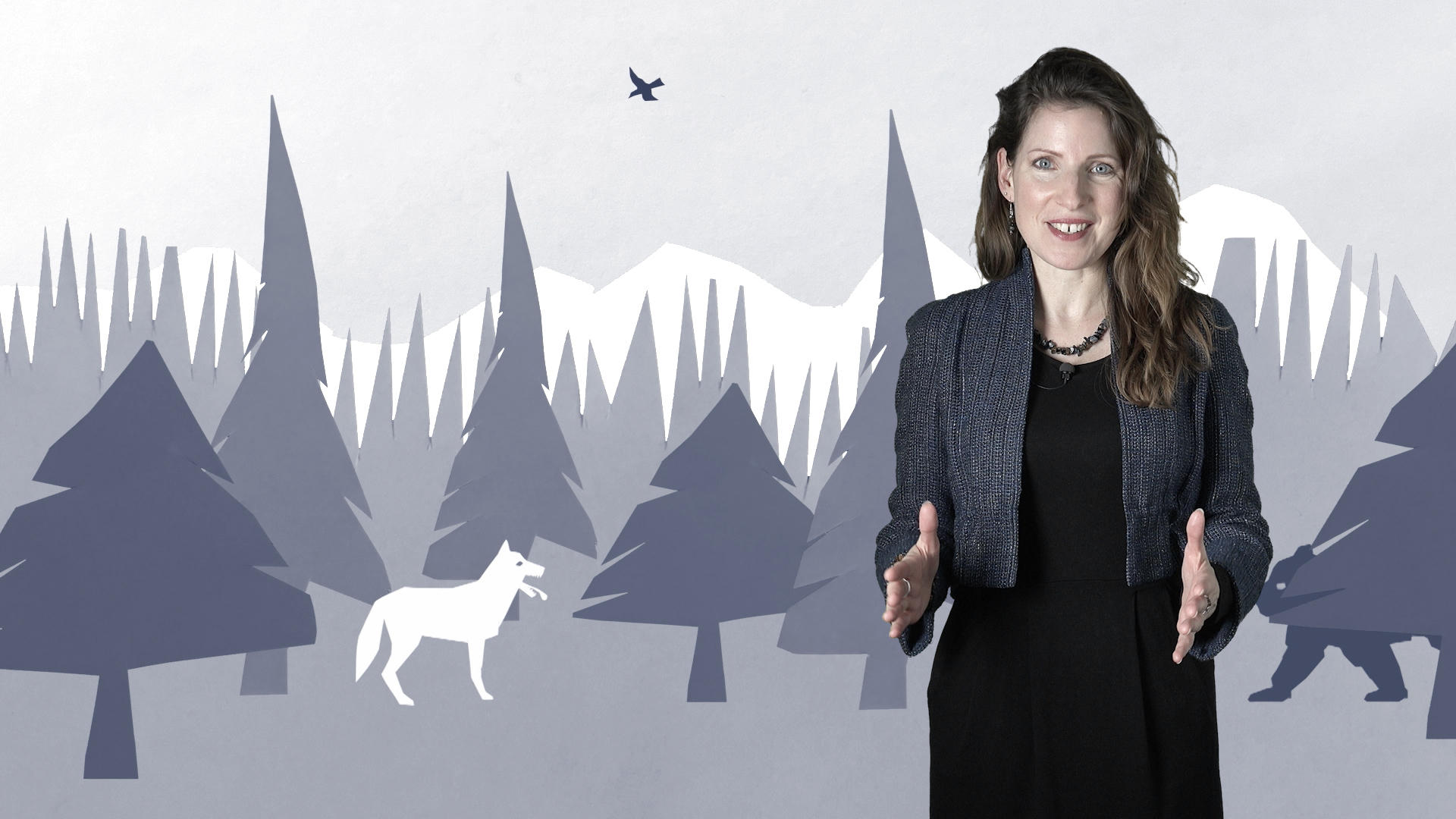
Big, yes, but bad? Carnivore divides Swiss opinion
Emotions run high whenever this elusive creature appears. As wolves make a comeback in Switzerland, they spark feelings of awe, fear, anger and fascination.
The anti-wolf camp hunted down the last wild Swiss wolf in the late 19th century. However, Canis lupis survived in other parts of Europe. In 1995, a lone grey wolf loped over from Italy. Now there are more than 30 living in the Swiss Alps.
Since their return, wolves have divided opinion. But why such a fuss about so few? In comparison, many European nations – even small ones like Switzerland – have hundreds, while Russia and Canada have tens of thousands of wolves.
It comes down to a debate between farmers and conservationists.
“Our ancestors killed off these predators. I don’t know why they’re coming back now,” says Hedwig Zuber, a sheep farmer in the Valaisian village of Furen. Despite using an electric fence, she and her husband have experienced two wolf attacks on their flock. Now they no longer put their 35 sheep out to summer pasture.
“Even if we built a high fence, a wolf would dig under it or jump over it. We don’t see a future for the wolf in Switzerland. They kill for fun,” says Zuber. She’s more tolerant of lynx. “They’re OK. They kill one animal and then it’s quiet for a while.”
Wildlife management
Under the international Bern Convention, the wolf is a protected species and cannot be shot without a hunting permit. To help reduce any damage caused by wolves, Switzerland has measures in place. The federal authorities promote the use of livestock-guarding dogs as a means of keeping wolves at bay. Also, farmers are reimbursed for their losses out of the public coffers.
If an individual “problem wolf” kills a certain number of sheep within a certain time frame, he can be shot. However, research suggests that careless culling can create more problems than it solves. Switzerland’s lead gamekeeper agrees that if an alpha wolf is shot, it affects the whole pack.
“This causes the most trouble. With well-organized packs, there are fewer attacks,” says Reinhard Schnidrig of the Federal Office for the EnvironmentExternal link. However, as he told Swiss public television, SRFExternal link, he doesn’t mean that problem wolves shouldn’t be shot.
Conservationists argue that wolves have a role to play in nature. The fact that they eat foraging prey species like deer helps to limit grazing – thus fostering biodiversity.
(Video: SRF/swissinfo.ch)
Lifespan: 5-8 years
Weight: 25-80kg
Height at shoulders: 50-100cm
Food source: Deer, chamois, wild boar
Where to find: Mainly in the Alps but sighted throughout Switzerland
Conservation status: Least concern
Swiss population: 30-35, grouped into three packs, one pair, and some lone wolves

















![The four-metre-long painting "Sonntag der Bergbauern" [Sunday of the Mountain Farmers, 1923-24/26] had to be removed by a crane from the German Chancellery in Berlin for the exhibition in Bern.](https://www.swissinfo.ch/content/wp-content/uploads/sites/13/2025/12/01_Pressebild_KirchnerxKirchner.jpg?ver=cb688ed5)
















You can find an overview of ongoing debates with our journalists here . Please join us!
If you want to start a conversation about a topic raised in this article or want to report factual errors, email us at english@swissinfo.ch.